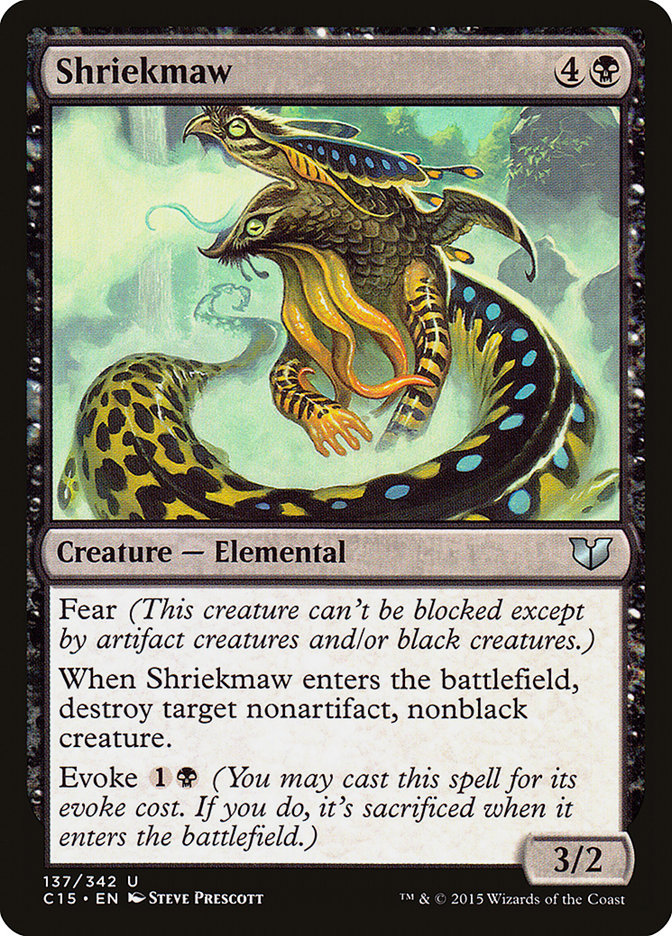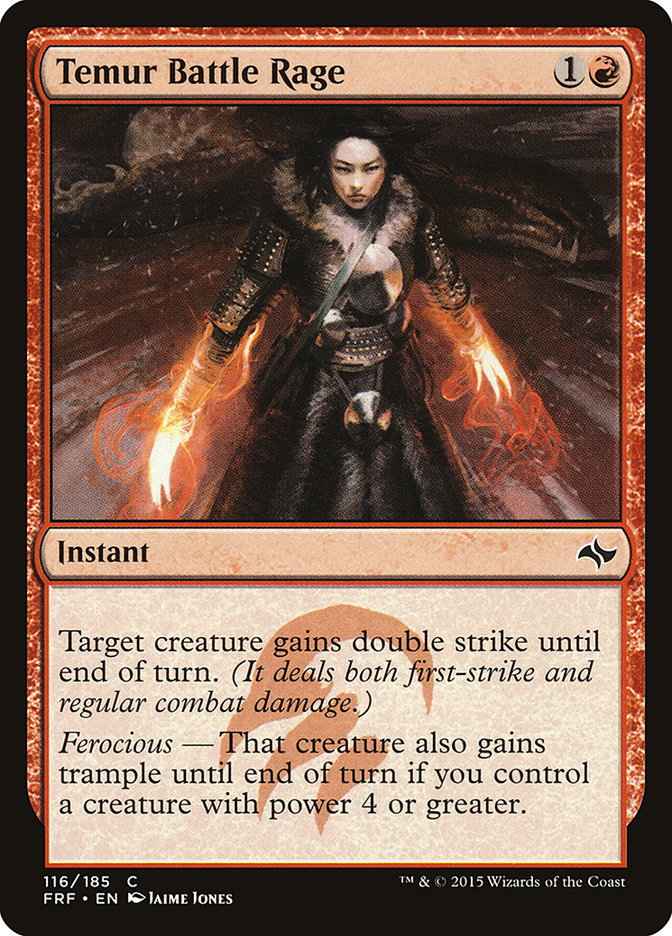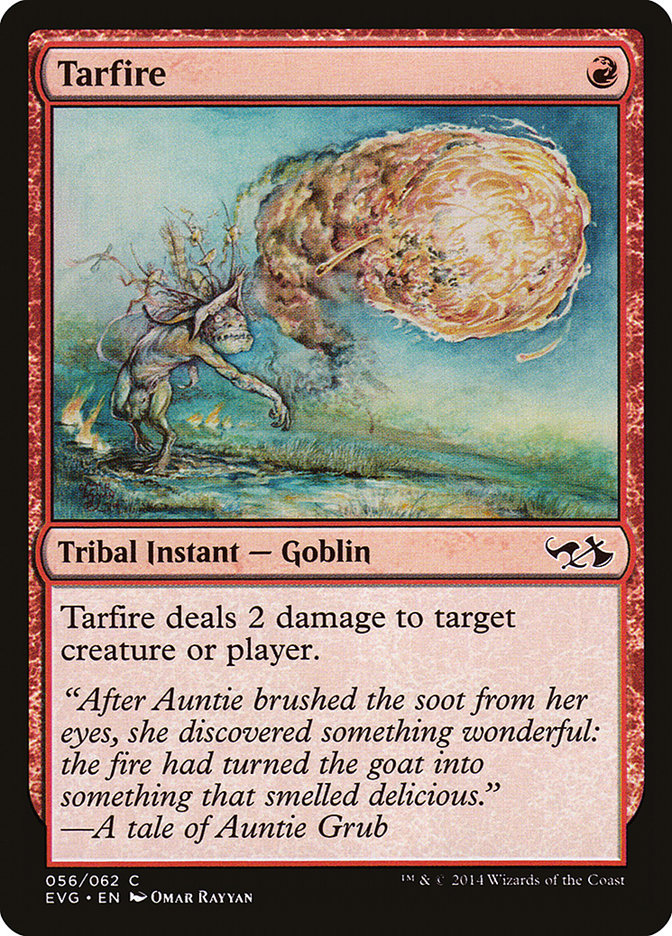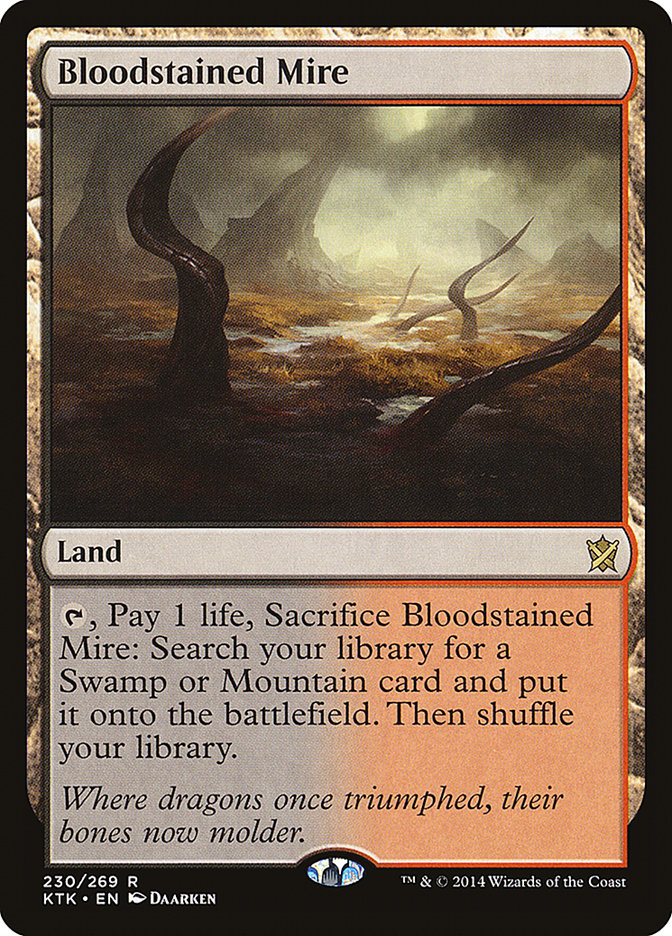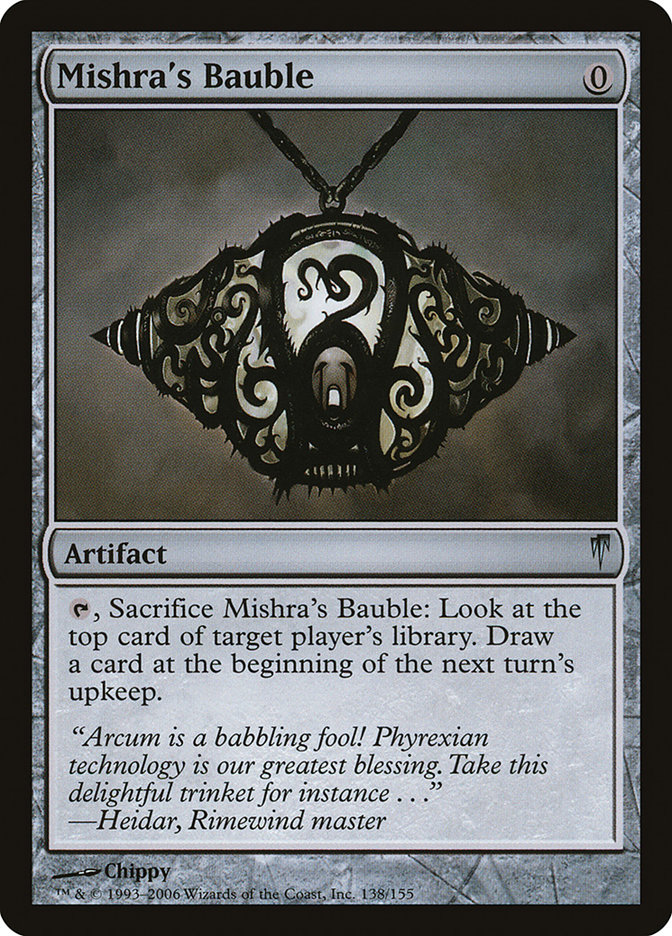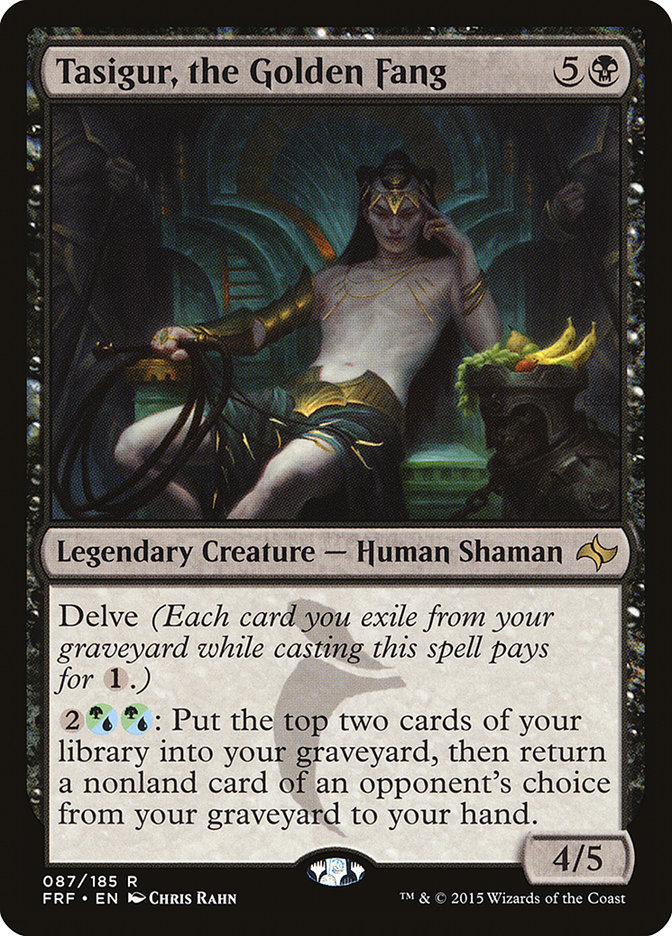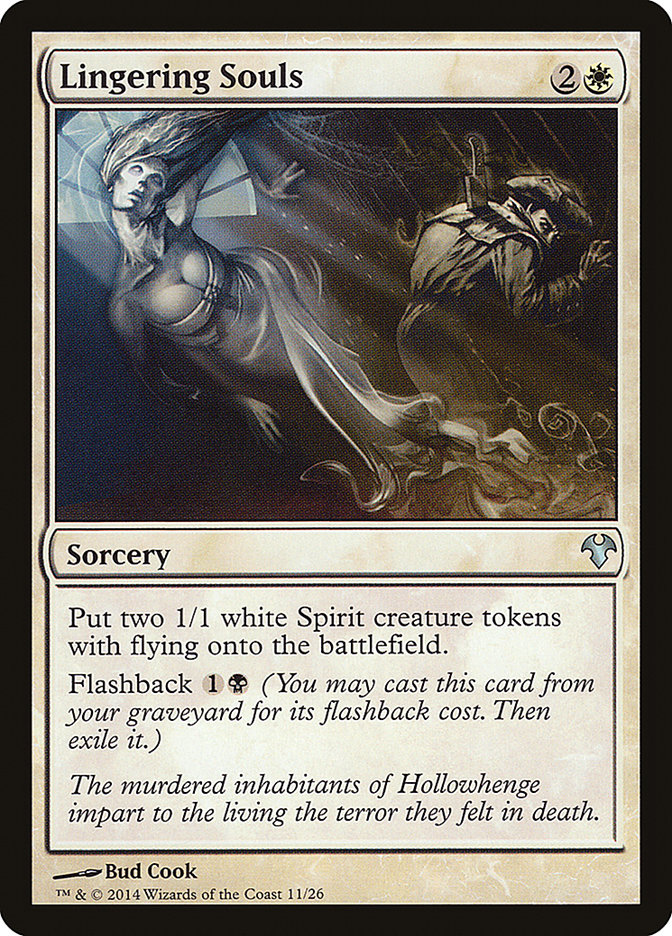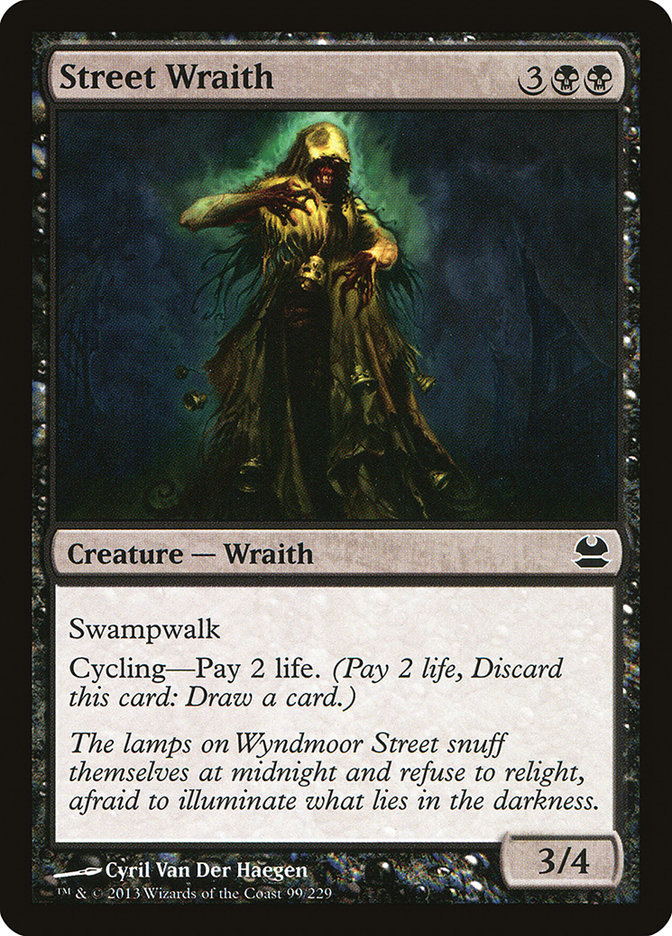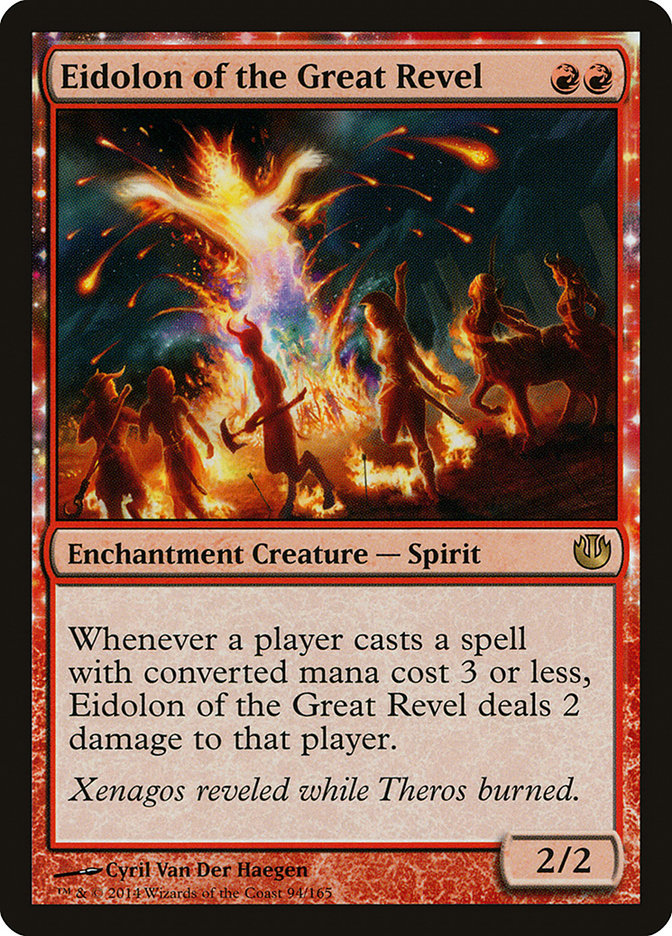Gerry broke it.
Well, more accurately, someone on Magic Online broke it, but here we are.
Creatures (13)
Planeswalkers (2)
Lands (18)
Spells (27)

Creatures (13)
Planeswalkers (2)
Lands (18)
Spells (27)

A lot of people are going to talk about this deck leading up to #SCGINDY this weekend, featuring the Modern Open. I just wanted to add my voice in the hopes that I found something important to say. So, without further ado, let’s get things moving.
For starters, this Death’s Shadow deck doesn’t function like the Death’s Shadow decks we’re used to seeing. Without Gitaxian Probe in the format, the “all-in” version featuring Become Immense and Temur Battle Rage isn’t nearly as explosive as it once was. And, as a result, the deck had to change. I truly believe that this is one of the best decks I’ve ever seen in its given format.
Let’s start with the obvious: Death’s Shadow is very easy to turn on in Modern, even without Gitaxian Probe. Many opponents will be attacking you with cheap creatures, but you’re more than capable of dealing yourself large chunks of damage with Thoughtseize, Street Wraith, and lands. That means you’re probably going to be casting Death’s Shadow on the second or third turn and attacking for nearly lethal by the fourth or fifth turn, assuming your opponent can’t kill all of your threats.
Tarmogoyf and Traverse the Ulvenwald give you a crazy amount of consistency, granting the ability to continually deploy threats that generally outclass all other creatures as far as base stats are concerned. Tarmogoyf is regularly a 5/6 but can get as high as a 7/8 with a little help from Tarfire and the occasional planeswalker. It is important to note that, even though the deck doesn’t have that many true threats, it employs an aggressively low land count and a lot of cyclers. Mishra’s Bauble and Street Wraith help to pump your Tarmogoyf while tearing through your deck in search of disruption, removal, and more creatures.
This deck is basically Jund that almost never floods out.
Expectations
1. More experimentation in the creature package.
I like Shriekmaw as an option to kill something like Eidolon of the Great Revel or opposing Tarmogoyfs.
Unfortunately, Shriekmaw comes from a time where black removal couldn’t usually kill opposing black creatures (or artifact creatures, for that matter), so its uses are limited. However, with Kolaghan’s Command in the mix, having access to a Shriekmaw could be huge.
2. No gimmicky combo elements.
Cut the Temur Battle Rage. You aren’t that deck any more. Sure, it can be a cool topdeck against an opposing combo deck that lacks removal. It can sometimes be the only card that can win you the game in rare situations.
But I’ve played too many games with variants of Death’s Shadow to go on playing Temur Battle Rage. If this is truly the best deck in Modern, people are going to adapt. More removal is going to see play. If people weren’t excited about Fatal Push already, you can bet your bottom dollar that they’re going to be all-in on it now. One-mana answers to Tarmgoyf and Death’s Shadow are going to be seeing a lot more play.
3. Consideration for the mirror.
With this deck hitting the scene fast and hard at #GPVAN this past weekend, there is no question that people will be flocking to it in droves. I wouldn’t be surprised to play against it three or four times throughout the tournament. And, if I’ve learned anything from old Zoo decks with a lot of removal, Ranger of Eos is the mirror-breaker. Both players have access to Fatal Push. The attrition battle is real, and the player who ends up with the last threat is going to be at a significant advantage since those threats hit so hard.
But Ranger of Eos isn’t the only card that matters in the mirror. After all, if you can’t kill all your opponent’s creatures, Ranger of Eos isn’t even that good. But I’m banking on people coming prepared with more answers to these early creatures, and not just in the mirror. That means threats like Lingering Souls and Ranger of Eos will be hugely important out of the sideboard, and a possible consideration for the maindeck.
Failures
1. Copying the same 75.
Playing Gerry’s 75 is a mistake. I’m telling you now that people are just now getting their hands on this deck, and they’re going to have taken this entire week to figure out what does and doesn’t work. They’re going to figure out the mirror. This is Caw-Blade before we figured out how good Condemn was. This is Mono-Black Devotion before we figured out four copies of Pack Rat was correct. This is the first iteration of a deck that is likely going to be around (and very good) in Modern for a long time.
2. Switching Tarfire to Lightning Bolt.
I know that will be the first reaction a lot of players have. Tarfire doesn’t deal as much damage as Lightning Bolt, kills fewer creatures, and honestly looks pretty mediocre on paper. Maybe it is, but that doesn’t mean Lightning Bolt is actually better.
I’m not convinced Tarfire is necessary as a four-of, but I do think it plays a very specific role in the deck. Turning on Traverse the Ulvenwald in the early turns is big for this deck. If you can’t get delirium in a timely fashion, you won’t be able to tutor for a threat to deploy, which ultimately makes your discard and removal spells worse. You want to cast those disruptive elements while attacking your opponent.
If you think about it, Tarfire kills just about the same number of creatures in Modern that Lightning Bolt does. The only exception that comes to mind right away is Wild Nacatl, but even a first-turn Tarfire can kill a first-turn Wild Nacatl. Obviously the format has creatures with exactly three toughness, but not a lot of them see play, and dealing two damage to a creature is almost as good as dealing three. Modern is a place where one- and two-mana creatures are at a premium. With so many choices available to each deck, low-toughness creatures with big-time abilities are much more desirable than something like Watchwolf.
Pick your battles. This isn’t the hill you want to die on. Make those Goblins happy. Keep the Tarfires.
3. Not understanding when to deal yourself damage.
I expect a lot of people to fall below the learning curve in the early weeks of playing this deck. I had a very hard time learning Death’s Shadow for the Players’ Championship, even after watching Brad Nelson play a ton of matches (both paper and Magic Online). This one is a little different, as the combat scenarios don’t revolve around Become Immense and Temur Battle Rage, or even sequencing your threats correctly to make sure you have the right colors of mana at all times.
But what if you don’t have an early Death’s Shadow? Do you fetch a shockland to cast your Thoughtseize? What if your opponent is playing Burn and those precious life points end up being important three or four turns later? These questions, and many more, will separate the bad pilots and the good ones. As of this moment, I would classify myself as one of the bad ones. I hope to remedy that before #SCGINDY this weekend.
Aside from knowing when to deal yourself damage, you also need to know how to sequence cards like Mishra’s Bauble. Targeting yourself can be a big deal when you have the option to use a fetchland. Knowing the top card of your deck can also be important for figuring out how to attack, or even how to sequence your early spells. Mishra’s Bauble might be secretly one of the toughest cards to play with in the Death’s Shadow deck.
Attacking the Enemy
1. Spot Removal is only good in Game 1.
Fatal Push and Snapcaster Mage will be a huge problem for the deck in the first game. The deck does have quite a few ways to go longer, thanks to Kolaghan’s Command and either Liliana variant, but don’t expect that strategy to work in the post-sideboard games. Lingering Souls and Ranger of Eos are tough to beat when your hand is full of spot removal.
And that, at its core, is why this is a truly awesome deck. While it has the capability of putting a ton of pressure on the opponent in the early turns, the sideboard options punish people who want to devote most of their plan to interaction. Removal, discard, and even counterspells will only get you so far. You need a coherent, proactive gameplan on top of that removal and discard in order to keep their late-game cards from getting out of control. Tasigur, the Golden Fang is a solid start, since the Death’s Shadow deck has very few ways of actually killing it, but any big Delve threat should do the trick (so long as you can clear out their blockers for a turn).
Answers to Lingering Souls that are also answers to Death’s Shadow and Tarmogoyf are also preferable to spot removal. I expect Engineered Explosives to see a huge uptick in playability and even more copies to see play in people’s maindecks. What I don’t expect is for this to catch on quickly, but those who catch on more swiftly will have a much higher chance of success against the Death’s Shadow strategy.
2. Sweepers are only good if you’re going over the top.
If you want to play sweeper effects against Death’s Shadow, you need to be able to cast them over and over again. That means Snapcaster Mage and Supreme Verdict, as well as a healthy amount of card draw to keep the resources coming. After sideboarding, the Death’s Shadow deck is resilient to sweeper effects, but two or three should run them out of just about everything they’ve got. Lingering Souls and Ranger of Eos can only get you so far, after all.
Relying on these types of lines can be risky, though. The Death’s Shadow deck plays a ton of discard spells to make sure they have access to complete information as much as possible. That means they’re going to know that you have a sweeper most of the time, and they’ll try to play around it as best they can. And if you aren’t putting pressure on the opponent in some other way, they don’t actually have to commit more than one creature to the battlefield at a time. Planeswalkers like Nahiri, the Harbinger are a great way to force the Death’s Shadow opponent into over-committing threats to the battlefield.
Aside from planeswalkers, you can assemble some two-card combos that give them a run for their money. Brain in a Jar or any Expertise spell combined with a fused Beck//Call is something they’re likely going to have trouble with. Getting those two-card combinations together could prove troublesome thanks to the discard effects, though. Your best bet: have cards that are good on their own, use brute force to contain their threats, and try to draw a lot of cards if possible.
3. Burn them out.
I do think Burn is favored against Death’s Shadow, and especially so if they move away from Wild Nacatl and toward Fatal Push. Path to Exile is a tough card to cast against the Death’s Shadow deck because they can find a lot of ways to use that extra mana, especially after sideboard. Plus, they don’t mind just casting Street Wraith if the game goes long. What you need to do, as a Burn player, is to stop giving them lands and stop giving them so many creatures to target with their removal spells.
If your plan is to burn people out, your creatures can be important in a lot of matchups. Wild Nacatl hits hard and fast, which can be worth more than a single burn spell against a combo deck, but really starts to put you behind the eight-ball if your opponent has access to a lot of cheap removal. While Wild Nacatl versions might be able to play enough creatures to overload Fatal Push decks, I think the correct way to go is to just play more actual burn spells. And, of course, your own copies of Fatal Push.
Moving away from green in favor of black is something we’ve seen before. Sometimes that means Bump in the Night, while other times it means Tasigur, the Golden Fang. Now, it probably means both of those and Fatal Push, and maybe one or two other black cards out of the sideboard. But Burn can be a tricky deck to build. It requires a solid balance between threats and burn spells, and sideboarding out too many of one or the other can alter how your deck functions against a prepared opponent. In this specific matchup, your best bet is to just go super-heavy on the burn spells, light on the creatures, and medium on the spot removal like Fatal Push.
Final Thoughts
Death’s Shadow put up some of the best numbers at #GPVAN since the inception of Modern. There is a very good reason for that: the deck is really friggin’ good. The discard elements, cheap removal, cheap threats, and high density of action thanks to a low land count all add up to a powerful strategy that can be tough to keep up with. The sideboard gives it some solid backup in matchups that could potentially prove difficult, and the only real weakness is that the deck usually needs to deal itself about ten damage to function optimally.
If that is the only weak spot to exploit, maybe Burn (or just Lightning Bolt decks in general) should be the first place to start if you want to beat the deck. But maybe this deck just beats Burn too. I haven’t gotten to watch the deck in action enough to figure it out just yet, but I’m working on it. I should have a video up with the Death’s Shadow deck later this week and a VS video coming out next week. Hopefully those experiences will teach me exactly what I need to know to beat the deck, or maybe just convince me to play it.
I guess that wouldn’t be so bad either.





